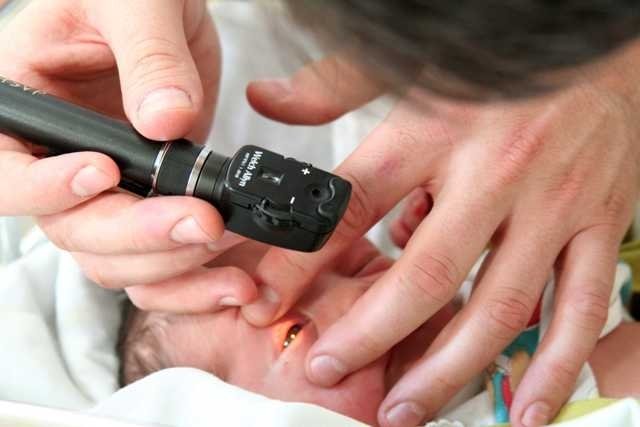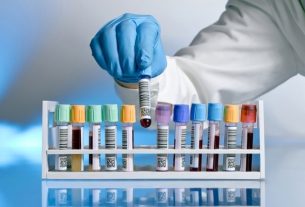The eye test, also known as the red reflex test, is a test carried out during the first week of a newborn’s life to evaluate the structures of the eye, ensuring that they are correctly developed.
This test is normally done in the maternity ward, but it can also be done at the first consultation with the pediatrician, and must be repeated a few times during the first 2 years of life.
The eye test is indicated for all newborns, but it is especially important in the case of children who were born with microcephaly or whose mothers were infected with the Zika virus during pregnancy, as there is a greater risk of developing vision changes. .

When to get tested
The eye test must be carried out on all newborns and is usually done in the maternity ward, during the first days of life. However, if this is not possible, the test should be done at the first consultation with the pediatrician outside the maternity ward.
It is also recommended that the test be repeated regularly during the first 2 years of the baby’s life, according to the pediatrician’s guidance, but it is normally done at 4, 6, 12 and 24 months.
What is it for
The eye test evaluates the structures of the eye and, therefore, allows you to identify any changes that are suggestive of eye diseases such as:
- Congenital cataract;
- Glaucoma;
- Retinoblastoma;
- Blindness.
Furthermore, in this test, the doctor can also assess whether the baby has a high degree of myopia or hyperopia.
How the test is done
The eye test doesn’t hurt and is quick, and is performed by the pediatrician using a small device that projects a light into the newborn’s eyes.
When this light is reflected red, it means that the baby’s eye structures are healthy. However, when the reflected light is whitish or has a different shape between the eyes, further examinations should be performed with an ophthalmologist to investigate the possibility of vision problems.
When to have other eye exams
In addition to the eye test, the baby must be taken for an appointment with an ophthalmologist in the first year of life and at 3 years of age. In addition, parents should be alert to signs of vision problems, such as not following the movement of objects and lights, the presence of photos in which the child’s eyes reflect white light or the presence of crossed eyes for 6 months, which indicates strabismus.
If these signs are present, the child should be taken for examinations by an ophthalmologist, making it easier to identify the problem and provide appropriate treatment to prevent more serious problems, such as blindness.
See other exams that the baby should have right after birth.
Bibliography
- BRAZILIAN SOCIETY OF PEDIATRICS. Eye Test. Available at: <https://www.sbp.com.br/campanhas/campanha/cid/teste-do-olhinho/>. Accessed on Aug 19, 2021
- SCIENTIFIC DEPARTMENT OF ONCOHEMATOLOGY. Eye test and Retinoblastoma. 2015. Available at: <https://www.sbp.com.br/fileadmin/user_upload/2015/02/teste-olhinho-retinoblastoma.pdf>. Accessed on Aug 19, 2021

Sign up for our newsletter and stay up to date with exclusive news
that can transform your routine!
Warning: Undefined array key "title" in /home/storelat/public_html/wp-content/plugins/link-whisper-premium/templates/frontend/related-posts.php on line 12
Warning: Undefined array key "title_tag" in /home/storelat/public_html/wp-content/plugins/link-whisper-premium/templates/frontend/related-posts.php on line 13



